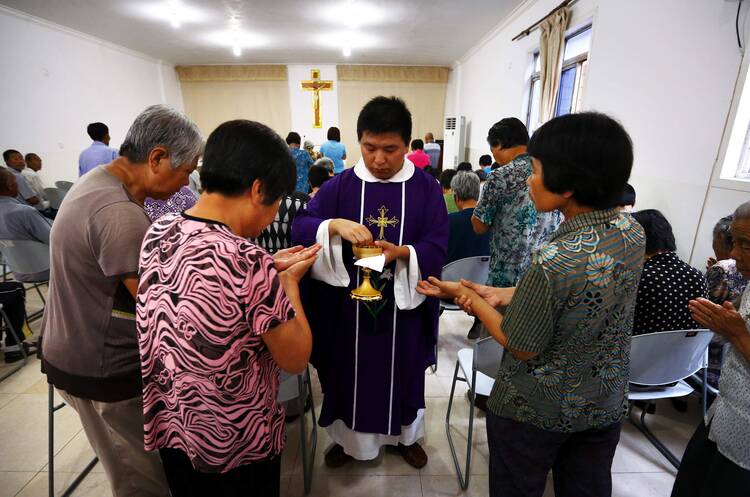The heat was on Christians of all denominations in China this summer, as an ongoing campaign sought to reassert the Communist Party’s ideological leadership. In one of the most overtly anti-mainstream religious movements in years, Protestant churches were targeted in one of Christianity’s strongest regions, coastal Zhejiang Province, where crosses displayed on churches were systematically removed and in some cases churches or shrines were torn down.
The cross removals were initiated by the province’s Communist Party secretary, Xia Baolong, who felt the symbols were too overt. The crackdown, which appeared to be limited to Zhejiang, was portrayed by authorities as moves against churches that were illegally constructed. The campaign was widely seen, however, as an effort to diminish the rapid growth of Christianity in the area, in part by reducing the “skyline” of crosses.
Most surprising was that the majority of the targeted churches had been built with state authorization, unlike the unapproved churches, including underground Catholic churches loyal to the Vatican, which are the usual victims of periodic repression. (China has no official relations with the Vatican and requires Chinese Catholics to belong to the Chinese Patriotic Catholic Association.)
It was during these church and cross demolitions that one of the province’s most iconic churches, the 140-year-old, French-built Jiangbei Sacred Heart Cathedral in Ningbo, caught fire and burned. The traditional, seafaring city of Ningbo stands at the confluence of three rivers, a sort of Chinese Pittsburgh. Catholics there at first believed that the cross-removal campaign had taken a dark, new turn, but no evidence of arson has been found. The fire was probably no more than an unhappy coincidence. The church’s loss is being felt by Catholic and other Ningbo citizens alike. The cathedral was a favorite backdrop for young people’s wedding photos, regardless of their faith.
Following the highly publicized beating death of a woman at a McDonald’s restaurant in Shandong Province, government officials also moved decisively against the Church of Almighty God, a quasi-Christian cult also known as “Eastern Lightning.” (The group takes its name from Mt 24:27: “For as lightning that comes from the east is visible even in the west, so will be the coming of the Son of Man.”) Eastern Lightning has become an outlawed religious group because of its specific antigovernment stance and because of its classification as a cult. About 1,000 of its adherents have been arrested, and five of its members were put on trial in late August after the murder at McDonald’s. The five may have been trying to proselytize the woman at the time; they allegedly bludgeoned her to death when she refused to hand over her phone number.
The Chinese government previously demonstrated its determination to eliminate what it views as harmful religious groups during its campaign against the quasi-Buddhist sect Falun Gong after its members encircled the Zhongnanhai leadership complex in Beijing in 1999. Falun Gong had by that point recruited millions and counted many Communist Party members and People’s Liberation Army officers among its ranks.
China also made its stance on relations with the Vatican clear as Pope Francis visited nearby South Korea. Pope Francis became the first pope to fly through Chinese airspace, sending greetings to China’s President Xi Jinping as he did. Those tidings of joy were not met in kind. Although Beijing was never on the pope’s itinerary for his first visit to Asia, Chinese Catholics were told not to journey to Korea to participate in any related events there, and there was no news coverage in China of the pope’s visit to its neighbor.
These various threads of official resistance to Christianity were tied together into a more coherent, if worrisome policy in an announcement made in late August: Chinese authorities plan to formulate and promulgate an official version of Chinese Christian theology, with catechisms to be used by Catholics and Protestants. Worship will be restricted to state-operated churches led by state-ordained priests and ministers.
If the summer was sweltering for Christianity in China, then the approaching winter may prove bitterly cold.








